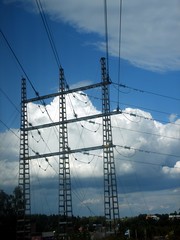 On the Conversation, I blog about the risks of electromagnetic disruption from solar storms and EMP: Electromagnetic disaster could cost trillions and affect millions. We need to be prepared.
On the Conversation, I blog about the risks of electromagnetic disruption from solar storms and EMP: Electromagnetic disaster could cost trillions and affect millions. We need to be prepared.
The reports from Lloyds and the National Academies are worrying, but as a disaster it would not kill that many people directly. However, an overall weakening of our societal and global systems is nothing to joke about: when societies have less resources they are less resilient to other threats. In in this case it would both information processing, resources and ability to do stuff. Just the thing to make other risks way worse.
As a public goods problem I think this risk is easier to handle than others; it is more like Y2K than climate since most people have aligned interests. Nobody wants a breakdown, and few actually win from the status quo. But there are going to be costs and inertia nevertheless. Plus, I don’t think we have a good answer yet to local EMP risks.
Might as well try the new comments system….. 🙂
Apparently there is an RSS feed here. Perhaps an RSS box or a mention somewhere would be useful?
Re EMPs –
Would wrapping gadgets in aluminium kitchen foil be sufficient protection?
(Works for my tin-foil hat).
I read that an unplugged microwave is a Faraday cage suitable for protecting small gadgets. Any other ideas?
Seems the comments indeed work. Will fix the RSS.
As for aluminium foil, I am sceptical. A lot of survivalists are going on about wrapping equipment in it, but most of the evidence they point to is blocking cellphone reception. It will block fields with frequencies above 100 MHz. Great news, except that the bulk of the EMP spectrum is low frequency! I think the key problem is the thinness of the foil, but I am not an EM expert.
Similarly, microwave ovens are built to contain microwaves (and hence also lower frequencies) but not higher frequencies: the wire mesh will not cut off sufficiently high frequency radiation (as evidenced by the visibility of the interior through the mesh – light is EM too). Still, it is likely better. Looking at real EM shielding, there is also a lot of effort put into seals and gaskets, since they can let in (or out) unwanted fields.